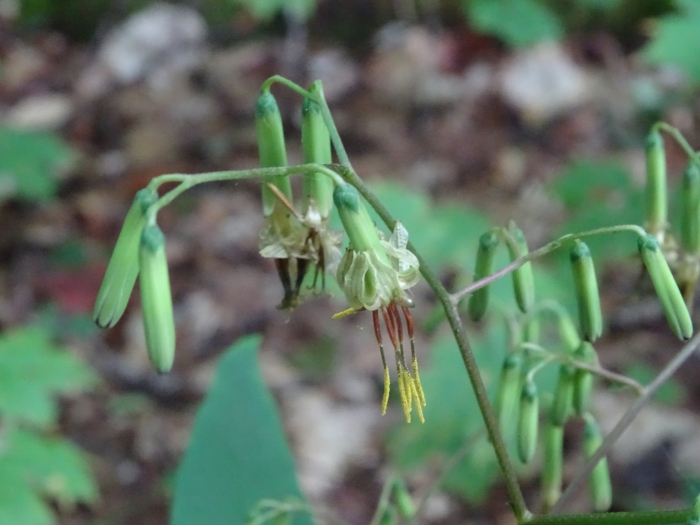Rattlesnake Root
(Nabalus altissima)
Rattlesnake Root (Nabalus altissima)
/
/

Reuven Martin
Public Domain










































Estimated Native Range
Summary
Rattlesnake Root is valued for its adaptability to shade and its contribution to native plant gardens, where it provides food for pollinators and local wildlife. It is often used in naturalized areas, shade gardens, and as a border plant in more informal settings. Gardeners appreciate its tolerance of full shade conditions, although it can also handle part shade. It requires consistently moist soil with good drainage and can be watered regularly to maintain medium to high soil moisture levels. While generally disease-free, it can occasionally suffer from rust or leaf spot. Rattlesnake Root is not known for aggressive roots or significant invasiveness, making it a reliable choice for cultivation in appropriate settings.CC BY-SA 4.0
Plant Description
- Plant Type: Herb
- Height: 2-6 feet
- Width: 2-3 feet
- Growth Rate: Moderate
- Flower Color: Green, White, Yellow
- Flowering Season: Summer, Fall
- Leaf Retention: Deciduous
Growth Requirements
- Sun: Full Shade
- Water: Medium, High
- Drainage: Medium
Common Uses
Butterfly Garden, Edible*Disclaimer: Easyscape's listed plant edibility is for informational use. Always verify the safety and proper identification of any plant before consumption., Low Maintenance
Natural Habitat
Rich, moist deciduous forests and forest edges
Other Names
Common Names: Tall Rattlesnakeroot , Tall White Lettuce , Tall White Rattlesnakeroot , Prenanthe Élevée , Prenanthe Très Haute
Scientific Names: Prenanthes altissima , Nabalus altissima , Prenanthes altissima var. cinnamomea , Prenanthes altissima var. hispidula , Prenanthes altissima f. altissima , Prenanthes altissima var. altissima , Prenanthes cordata , Nabalus altissimus var. ovatus , Nabalus cordatus , Prenanthes altissima f. hispidula
GBIF Accepted Name: Nabalus altissima (L.) Hook.